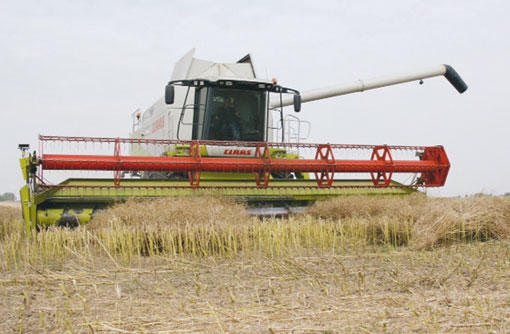Some OSR hybrids fail to deliver this season

This season has proved to be a difficult oilseed rape growing year and the first results from the HGCA’s east/west region confirm this, with yields 0.8t/ha down on the five-year mean.
Lodging, a very long flowering period and insufficient light intensity are being blamed for the poorer yields, as well as affecting variety rankings.
As a result, experts are stressing the importance of looking at a variety’s four-year mean to get a balanced view.
Seed yield data from eight sites shows strong performance from two hybrid candidate varieties, Marathon ((105%) and PT211 (104%), with existing RL choices Vision (105%), PR46W21 (102%) and Sesame (102%), also doing well.
“Vision currently tops the yield for conventional varieties on the RL, while the top-yielding restored hybrid is PR46W21, says HGCA Recommended List manager Simon Oxley.
“Of the candidate varieties, Marathon (105%) and PT211 (104%) have performed well.”
At this stage, the top four are separated by just three percentage points, although the seed yield data is still to be converted to gross output and the results from some badly lodged sites haven’t been included.
Last year’s new recommendations, conventional DK Camelot and hybrids DK Expower and Thorin, have failed to meet expectations, with DK Expower, in particular, reported to be badly affected by lodging.
NIAB TAG results
Oilseed rape yields have been disappointing, agrees Simon Kightley of NIAB TAG, who points out that even the organisation’s trials yields – which are always 20% higher than farm levels – are scarcely above 4t/ha.
Bad conditions for pollination, together with a protracted flowering period, were followed by low light intensity at pod fill, he points out.
“It was in complete contrast to the previous year, when we saw record yields,” he says. “In 2011, it was dry for a long time. This year, it rained from the beginning of April onwards.”
Lodging has also been a contributing factor, he notes. “The only upside is that this season will help to pick out those varieties with good standing ability.”
So far, there’s no yield difference between hybrids and conventionals, he reports, although some notable hybrid varieties have slipped down the order.
“In the NIAB TAG trials, there’s only one hybrid, PT211, in the top 10. It sits just behind Sesame, which has done very well, Rivalda, Tactic and Vision.”
Varieties which have performed well in both HGCA and NIAB TAG trials include Vision and the candidate hybrid PT211, he adds.
However, those which joined the Recommended List for the east/west region last year are not looking particularly exciting this year, comments Mr Kightley.
“DK Expower has dropped right down, due to lodging. Of course, it may have just had a particularly good season last year. DK Camelot and Thorin haven’t done anything special either and are currently 7% or so behind Marathon.”
The four candidates that he had picked out earlier on in the season as worth watching have had mixed fortunes. “The hybrid Marathon has done very well and is equal top in the HGCA trials. The semi-dwarf, Troy, is also sticking in there.”
But his two conventional choices, Patron and Quartz, haven’t been able to keep up with the pace in such an unusual season.
HGCA results: Top four performers (2012)
| 2008-12 | 2012 | |
|---|---|---|
| Control mean | 5.1t/ha | 4.3t/ha |
| Marathon | 105% | 105% |
| PT211 | 103% | 104% |
| PR46W21 | 103% | 102% |
| Sesame | 103% | 102% |

